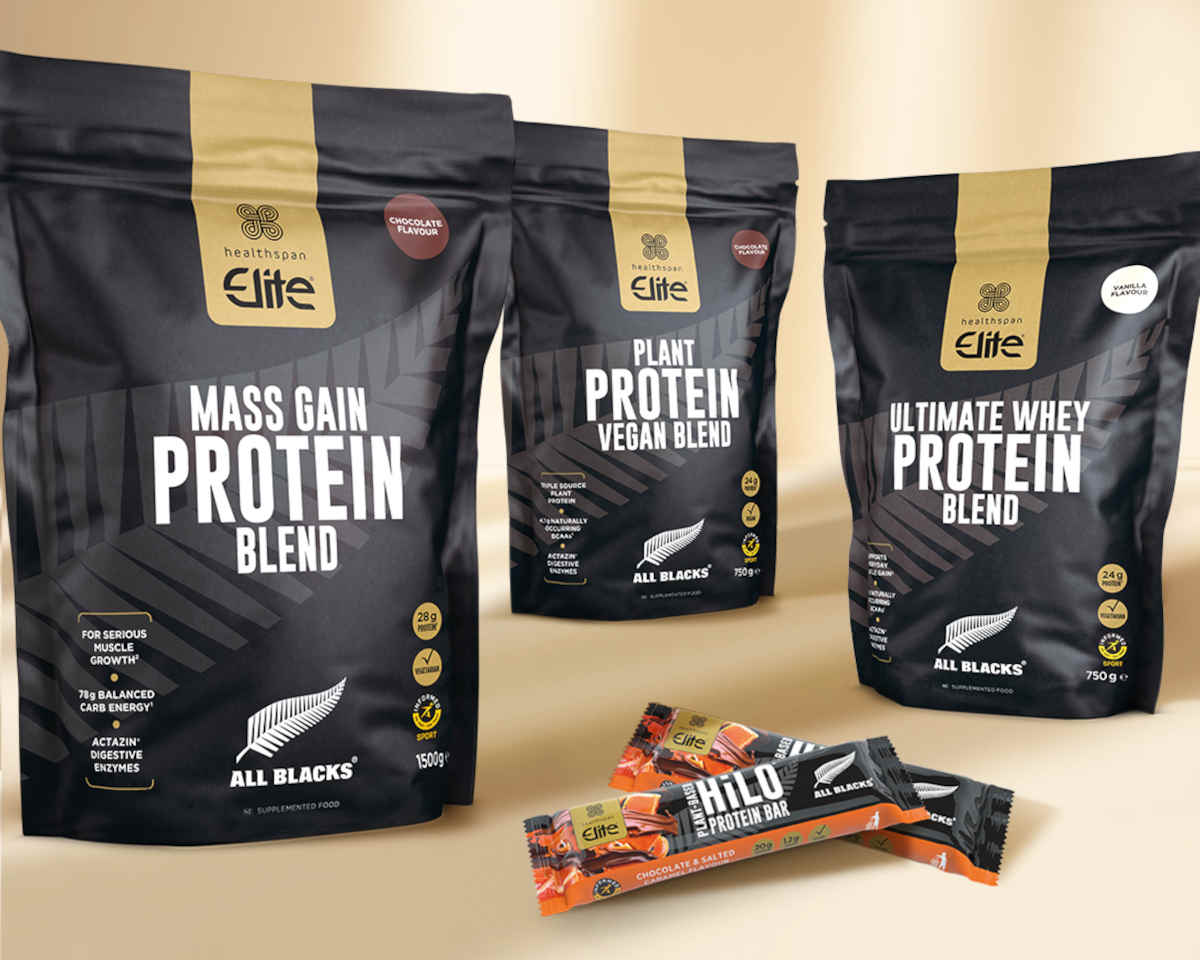Lucy Gornall and Sports Nutritionist Rob Hobson explain how the right nutrition and workout regime will help you build a strong, toned body.
🕒 7 min read
Building muscle is no longer confined to bodybuilders and those seeking a Herculean physique. In fact, growing and maintaining muscle mass is essential for supporting bones and joints, boosting metabolism, supporting posture and generally making overall movement easier, particularly as we age. So, realistically, it's wise for everyone to focus on gaining some muscle.
If you really want to build muscle efficiently, you'll need to follow a muscle-building diet and exercise plan. But remember, Rome wasn't built in a day, and growing muscle takes time – but following these diet and exercise tips consistently will set you on the right path.
The best muscle-building diet
To build muscle without also gaining large amounts of fat, you need a diet that provides the necessary nutrients needed for muscles to thrive. The correct balance of macronutrients – carbs, proteins and fats – is key, with protein being the number one macro for muscle building.
Protein for muscle gain
There's a good reason why you see gym goers sipping on a protein shake after a heavy weights session. Healthspan Nutritionist Rob Hobson says that the amino acid leucine, found in protein, triggers muscle protein synthesis.
"Keep in mind, however, that different protein foods have differing levels of leucine," says Rob. "Whey protein contains high levels of leucine, so a post-workout shake is great. Healthspan Elite Plant Protein Vegan Blend is a great vegan alternative to whey protein, and still contains plenty of leucine."
The quality of protein does also vary, depending on its source. "Animal-based sources of protein, as well as whole sources of soy such as tofu, contain all nine of the 'essential' amino acids – essential meaning that they cannot be produced in the body and must be derived from food," explains Rob.
"Plant-based protein sources typically don't contain all nine. Instead, they contain just some of these amino acids, so anyone following a plant-based diet must vary their protein sources to achieve the healthy amino acid profile needed for building muscle."
Lean sources of protein are your best bet. Try fish, chicken, turkey, lean beef, eggs and dairy foods. For plant-based diets, good sources of protein include quinoa, tempeh, beans, and legumes such as peanuts.
How much protein to build muscle?
Aim to consume about 1.5g of protein per kg of bodyweight to help build muscle. Someone who weighs 90kg, for example, would need about 135g of protein each day.
As for energy-giving carbs, go for the slow-release kind to avoid a spike of energy followed by a sharp drop, which can ultimately make you feel sluggish and tired.
Rob recommends wholegrain breads, pasta and cereals, sweet potatoes, fruit and vegetables.
Whey protein, clear protein, vegan protein and protein bars: the Healthspan Elite protein range has been developed with the All Blacks and uses the highest-quality protein sources to help you achieve your goals.
Healthy fats and carbs
Fats – the healthy kind – are a key part of a balanced diet, but in terms of muscle building, proteins and carbs are the key players.
"Omega 3 found in oily fish, flaxseed and walnuts may help with DOMs (Delayed Onset Muscle Soreness) but they're more about recovery than muscle building," says Rob.
When planning your meals, it's a good idea to ensure that about 50% of your plate is made up of carbs, 30% is protein and the rest is fat.
Try a brown rice stir-fry with chicken, tofu or beef and plenty of sliced veggies, for a quick, nutritious meal. Alternatively, try a wholemeal pasta dish with flaked salmon, crème fraîche and peas.
Lunch salads and sandwiches are great; just make sure you're getting that balance of protein and carbs to really feed your muscles. Try beef strips with salad on two slices of wholemeal bread.
For breakfast, opt for protein-filled Greek yoghurt with berries and oats, or toast topped with poached eggs or tofu and avocado.
Alongside your diet, stay fully hydrated, aiming to drink three to four litres of water a day.
The difference between bulking and cutting
Bulking, often done during winter, involves building muscle and, as the name suggests, 'bulking'. Whereas cutting, often done during spring in time for summer, involves losing (or 'cutting') the fat gained during bulking and maintaining lean muscle.
"During a bulk, you'll need to eat substantially more to feed muscles. But this does often mean gaining some fat. A nutritious diet will minimise this fat gain, however. During a cut, it's time to be a little stricter, likely tracking your intake and ensuring protein intake stays high to support muscle maintenance," explains Rob.
In terms of calories, working out your maintenance calories using an online calorie calculator and then adding 10% to 20% extra will help support a bulk. For a cut, take away about 500 calories from your maintenance. This applies to both men and women.
Pre- and post-workout foods
Just wrapped up a weights session? A protein shake is a good way to fuel muscles after exercise.
"The growth and building of muscles peaks after consuming around 25g of protein. Taking in 25g of protein post-training and at regular intervals (every few hours) across the day is better for muscle building than higher doses, less often," says Rob.
Try a scoop of Ultimate Whey Protein Blend mixed with water within an hour of finishing your workout.
Before a workout, look to eat a high-carb snack such as banana and yoghurt, or nut butter on a couple of oat cakes.
The best exercises for building muscle
If you want to build muscle, then your muscles need to work against a force, such as dumbbells, bodyweight, barbells, or any other form of weight.
It's a good idea to train different body parts on different days, as this allows muscles at least 48 hours to heal while you work on building muscle in another part of the body. A simple and effective workout split is push, pull, legs.
Essentially, using the push muscles on one day, such as shoulders and chest, the pull muscles on another day, such as the back and abs, and the lower-body muscles on another day.
The length of your session needn't be excessive; quality over quantity, after all. Around 45 minutes to an hour should be enough if you're fully engaged in your session.
Start with one to two big compound exercises; these are exercises that work multiple joints and muscles, such as deadlifts, squats, chest press and lunges. These don't just work your muscles and help them grow, but they also get your heart rate up.
Then go into your isolation exercises, which work just one joint and far fewer muscles, such as bicep curls, calf raises and tricep extension.
How many reps to build muscle?
For muscle building, aim for three to four sets of each exercise, with around 12 reps per set.
Keeping muscles under tension is the key to muscle growth, so a good way to mix up your exercises week on week, other than amending the weight, is your tempo. For example, on a squat, going down for 3 seconds, pausing, and then rising up for 1 second.
Supersets, which are two moves back to back with no rest in between, are another great way to maintain this tension.
Hoping to build lean muscle? This means honing in on your nutrition, as above, but also factoring in a little more cardio to your regime to help encourage fat loss.
Recovery and muscle building
Building muscle isn't just about lifting weights; it's also vital to let muscles heal and repair so they can continue to grow. Factor in two to three rest days a week, and use these days to engage in other activities such as swimming or yoga.
Plus, dynamic stretches involving movement (such as leg swings) before exercise are important to mobilise and warm up muscles and joints, while static stretches, which are still, work best at the end of a workout to avoid muscles cramping or feeling stiff.
Ice baths have been making big waves in the recovery space lately, but when it comes to building muscle, research shows that these can actually slow down progress. You should give these a miss and opt for other means of muscle recovery such as foam rolling, massage and heat therapy.
Ultimately, to build muscle effectively requires time and effort. You will see results if you include the right nutrients in your diet while also challenging your muscles at the gym with resistance, but patience is key: stay consistent with your workouts and diet, and muscle growth will follow.
Sports nutritionist Rob Hobson brings you your guide to the top supplements to supercharge your muscle-building journey.









